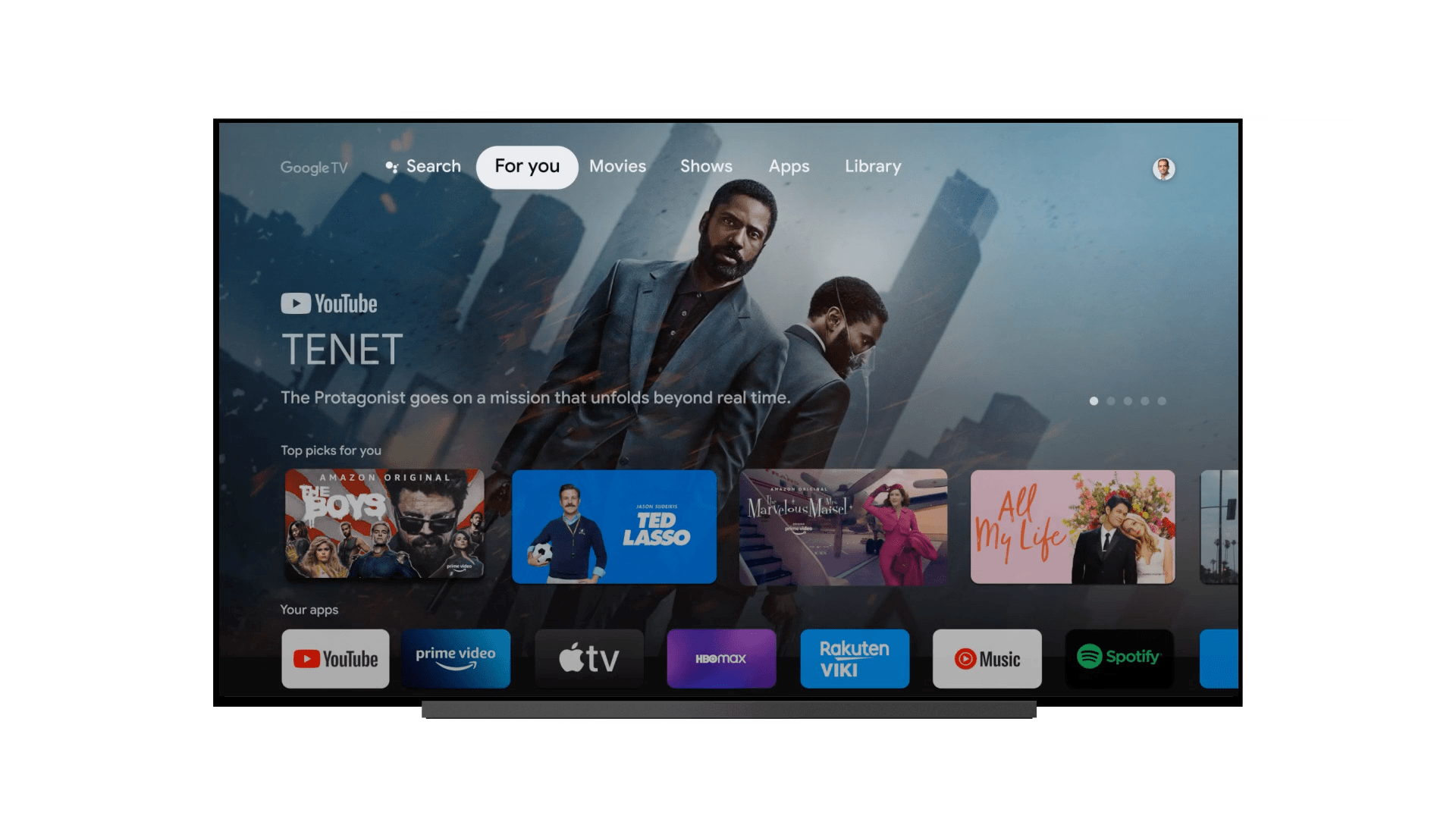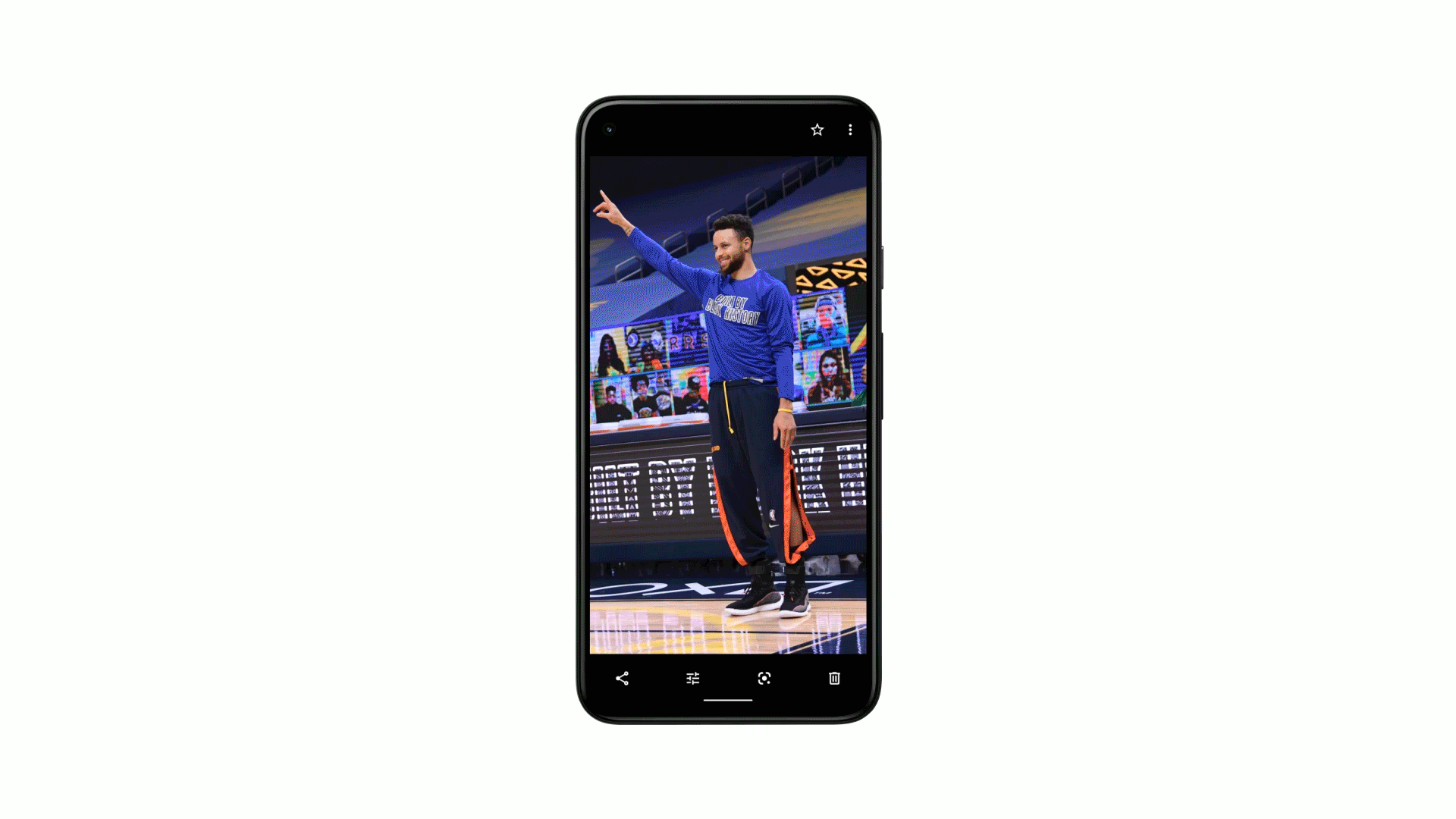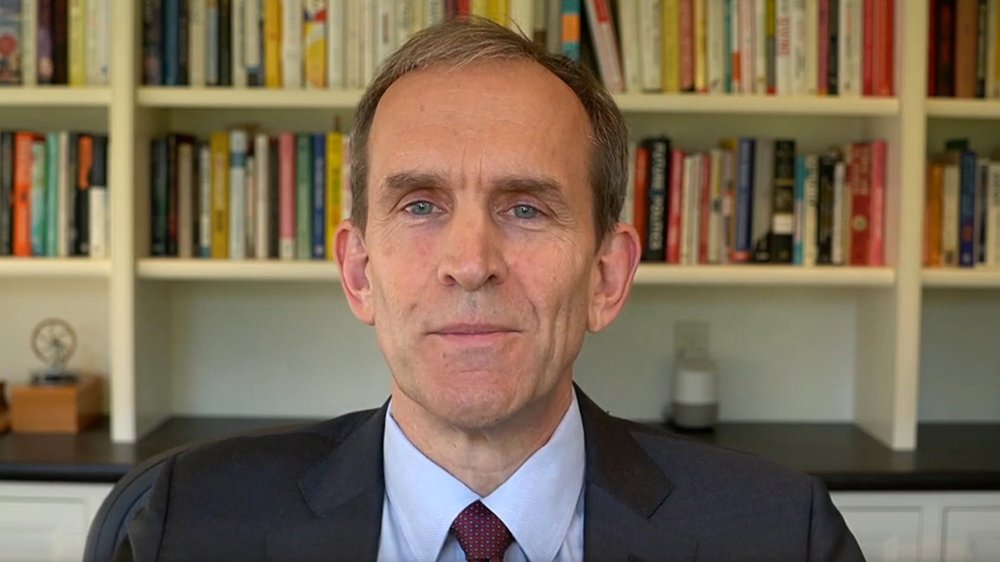Author Archives: Keyword Team
A new partnership to promote responsible AI
Source: The Official Google Blog
Updates on our support for Ukraine
Source: The Official Google Blog
Two new ways Google can help you plan your holiday meals
Source: Search
The Court’s decision to dismiss much of the Texas AG’s antitrust case
Today, a United States District Court struck down large parts of Texas Attorney General Paxton’s case as being "not plausible."
Importantly, the Court dismissed the allegations about our Open Bidding agreement with Meta — the centerpiece of AG Paxton’s case. Despite his allegations, this has always been a well-publicized, pro-competitive agreement.
The Court also agreed that many of AG Paxton’s claims relating to our technology innovations and practices — like Open Bidding and Accelerated Mobile Pages — are not plausible violations of antitrust law. The Court dismissed his claims about Privacy Sandbox too.
Today's decision underscores how AG Paxton's case is deeply flawed. As we’ve long said, advertising technology is a fiercely competitive industry — and our products increase choice for publishers, advertisers and consumers while enabling small businesses to affordably find new customers. We look forward to setting the record straight about the remaining claims.
Source: The Official Google Blog
How Google puts you in control of your location data
You may have seen news about lawsuits brought against Google concerning how we handle location data. These suits mischaracterize and inaccurately describe the settings and controls we provide users over location data.
Today, a court in Arizona made a significant legal ruling against the Arizona Attorney General. The AG is somehow claiming this as a big victory but in reality, a judge rejected his central argument. Unfortunately, just before today’s decision, four other state attorneys general rushed to file similar lawsuits making similarly inaccurate and outdated claims.
We wanted to take this opportunity to set the record straight about the location settings we offer, and how you are in control of your location data.
All smartphones use location data — it’s integral to how they work. It’s collected and used by network operators, device makers, apps, websites and operating systems. For our part, location makes Google products work better for you — it’s what helps you navigate around a traffic jam, helps you find your phone when you’ve misplaced it, and lets you find a pizza shop in your neighborhood instead of suggesting one in a different state.
We recognize that you have a lot of decisions to make around the use of location data by various apps and services. That’s why we’ve worked hard over the past few years to build more control and transparency directly into our products to make location easy to understand and simple to manage:
- Easy-to-use settings: We offer settings like Location History, which creates a timeline of where you have been, saved to your Google Account. You can delete this data or pause saving it at any time. Web & App Activity saves activity like the things you do on Google sites and apps, including associated info like location. Again, you can delete this data or pause saving it at any time.
- Auto-delete by default: Two years ago, we updated our data retention practices — in addition to turning Location History and Web & App Activity off, you can choose to automatically auto-delete them after a set period of time (3 months, 18 months or 36 months). (For new users, the default is to auto-delete them after 18 months).
- Transparency: You can instantly see your settings and manage them right from your favorite Google products — for example, on every search results page, we indicate the location information that was used to deliver results, and enable you to change your settings directly. And if you have Location History enabled, we send monthly and annual emails to remind you about places you’ve visited, along with easy access to your settings.
- Maps Incognito mode: With Google Maps Incognito mode, the places you search for or navigate to in Google Maps won’t be saved to your Google Account.
- Advertisers and apps: Location data helps you get relevant offers such as local pizza restaurants but we never sell your location data to advertisers — or to anyone. And from Android 10 onwards, you can choose to share your device’s location with third party apps only while they’re in use — or not at all.
As we design our products, we focus on three important principles: keeping your information safe, treating it responsibly, and putting you in control. We aim to strike a balance between offering granular customization for users who want to pick and choose between options, while keeping our controls simple and easy to understand. We will continue to focus on providing simple, easy-to-understand privacy settings to our users, and will not be distracted from this work by meritless lawsuits that mischaracterize our efforts.
Source: The Official Google Blog
Collaborating with the UN to accelerate crisis response
In remarks to the UN's High-Level Humanitarian Event on Anticipatory Action, Google SVP for Global Affairs, Kent Walker, discusses collaboration to accelerate crisis preparedness and predict crises before they happen. Read the full remarks below.
Mr. Secretary General, your excellencies, ladies and gentlemen - it’s an honor to join you as we come together to discuss these critical humanitarian issues.
As you know, technology is already raising living standards around the world—leveraging science to double life spans over the last 100 years, helping a billion people emerge from poverty in the last 30 years alone. And innovation will help drive environmental sustainability, raise living standards, improve healthcare, and enhance crisis response.
But addressing global needs in a meaningful way requires strong collaborations between technologists, governments, humanitarian organizations, and those most directly affected.
That’s why we are pleased to announce a $1.5 million commitment to OCHA’s Center for Humanitarian Data. Over the next two years, Google.org will support the Center in scaling up the use of forecasts and predictive models to anticipate humanitarian crises and trigger the release of funds before conditions escalate.
From the earliest days of efforts like Hans Rosling’s GapMinder, it’s been a dream that rather than waiting for a crisis to occur, data and technology could help predict events like droughts or food shortages weeks ahead of time, allowing agencies to provide alerts and deliver supplies to avert the crisis. That technology exists now, today—and we need to put it to work.
With the signs of climate change all around us, it’s essential that we improve our collective preparedness, and protect our most vulnerable populations.
Google is honored to support the critical work led by OCHA and the Center for Humanitarian Data, and we’re committed to combining funding, innovation, and technical expertise to support underserved communities and expand opportunity for everyone.
We hope others will join us in the important work of getting ahead of crises before they happen.
Thank you.
Source: The Official Google Blog
16 updates from Google I/O that’ll make your life easier
Part of our mission is to help make your daily life easier. At I/O this year, we shared news about a wide range of products and services that’ll do just that, from starting your car with your phone to searching your screenshots using Google Lens. Here are just a few of the features you should keep an eye out for.
Quickly view your notifications, invoke Google Assistant on Android.
Android 12 includes the biggest design change since 2014. We rethought the entire experience, from the colors to the shapes, light and motion, and made it easier to access some of the most used features:
- To invoke Google Assistant wherever you are, long press the power button.
- Swipe down to view your new notification shade, an at-a-glance view of all your app notifications in one place.
- And to make it easier to access everything you need, Google Pay and Device Controls have been added to your customizable quick settings.
Manage your privacy settings more easily on Android.
On top of the new design changes, we’ve also launched a new Privacy Dashboard, giving you easy access to your permissions settings, visibility into what data is being accessed and the ability to revoke permissions on the spot. You also have new indicators that let you know when apps are using your microphone and camera, as well as a way to quickly shut off that access. And we’ve added new microphone and camera toggles into quick settings so you can easily remove app access to these sensors for the entire system. Learn about new privacy controls in Android 12.
Change the channel with your phone.
Lost your TV remote? Don’t sweat it — we’re building remote-control features directly into your Android phone. Another bonus: If you need to enter a long password to log into one of your many streaming services subscriptions, you can save time and use your phone’s keyboard to enter the text. This built-in remote control will be compatible with devices powered by Android TV OS, including Google TV, and it’ll roll out later this year. Learn more about how we’re helping your devices work better together.

Use your phone to enter your password for your streaming services.
And unlock your car with your phone while you’re at it.
We’re working with car manufacturers to develop a new digital car key in Android 12. This feature will enable you to use your phone to lock, unlock and even start your car — and in some cases you won’t even need to take it out of your pocket. And because it’s digital, you’ll also be able to securely and remotely share your car key with friends and family if needed. Read more about Android Auto.
Understand more about your Search results.
When you’re looking up information online, it’s important to check how credible a source is, especially if you aren’t familiar with the website. Our About This Result feature in Google Search provides details about a website before you visit it, including its description, when it was first indexed and whether your connection to the site is secure. This month, we’ll start rolling out About This Result to all English results worldwide, with more languages to come. And later this year, we’re going to add even more helpful contextual details — like how the site describes itself, what other sources are saying about it and related articles to check out.
Change your password using Chrome and Assistant.
Chrome on Android will help you change your passwords with a simple click. On supported sites, whenever you check your passwords and Chrome finds a password that may have been compromised, you will see a "Change password" button from Assistant. Powered by Duplex on the Web, Assistant will not only navigate to the site, but actually go through the entire process of changing your password for you. This feature is already available for purchasing movie tickets, ordering food, and checking into flights.
Use Google Lens to translate your homework into a language you’re more comfortable with.
Google Lens enables you to search what you see — from your camera, your photos and even your search bar. For a lot of students, their schoolwork might be in a language they’re not as comfortable with. That’s why we’re updating the Translate filter in Lens, making it easy to copy, listen to or search translated text in over 100 languages. Learn more about how information comes to life with Lens and AR.
And search your screenshots with Google Lens.
Lots of people take screenshots of things they’re interested in buying — but it can be hard to follow up on those screenshots afterward. Now when you look at any screenshot in Google Photos, we’ll prompt you to search the photo with Lens. This will help you find that pair of shoes or wallpaper pattern that you liked so much.

Search your screenshots using Google Lens.
When shopping online, keep track of your open carts when you open a new tab.
Raise your hand if this has ever happened to you: You’ve got a browser open to do some online shopping, but then you get distracted and open up two, three, or 10 other windows — and you forget what you were online to do in the first place. We’re introducing a new feature in Chrome that shows you your open carts when you open a new tab. No more lost shopping carts here.
And get the best value for products you’re buying online.
Coming soon, we’ll let you link your favorite loyalty programs from merchants like Sephora to your Google account to show you the best purchase options across Google. Learn more about all our latest shopping updates.
Explore unfamiliar neighborhoods with more detailed views in Maps.
If you’re traveling by foot, augmented reality in Live View will show you helpful details about the shops and restaurants around you – including how busy they are, and recent reviews and photos. And if you’re traveling, Live View will tell you where you are relative to your hotel – so you can always find your way back.
Avoid the crowds with area busyness.
Maps already shows the busyness of specific places — in fact, more than 80 million people use the live busyness information on Google every day. Now we’re expanding that functionality to show the busyness of an entire area, allowing you to see just how bustling a neighborhood or part of town is at any given moment. This means that if you want to keep things low-key, you can use Maps to see the hotspots to avoid. And if you’re looking for the most popular places to visit, you can use area busyness to scope out the liveliest neighborhoods at a glance.
See breakfast spots in the morning and dinner joints at night.
We’re updating Maps to show you more relevant information based on what time of day it is and whether you’re traveling. That means we’ll show you things like coffee shops in the morning, when you need that caffeine fix, and burger joints at night, when you’re hungry for dinner. And if you’re on a weekend getaway, we’ll make tourist attractions and local landmarks easier to spot. Learn more about our latest updates to Maps.
Discover unexpected Memories in Photos.
Starting later this summer, when we find a set of three or more photos with similarities like shape or color, we'll highlight these little patterns for you in your Memories. For example, Photos might surface a pattern of your family hanging out on the same couch over the years — something you wouldn’t have ever thought to search for, but that tells a deeply meaningful story about your daily life. Learn more about Little patterns in Photos.
Bring your pictures to life with Cinematic moments.
When you’re trying to get the perfect photo, you usually take the same shot two or three (or twenty) times. Using neural networks, we can take two nearly identical images and fill in the gaps by creating new frames in between. This creates vivid, moving images called Cinematic moments. Producing this effect from scratch would take professional animators hours, but with machine learning we can automatically generate these moments and bring them to your Recent Highlights. Learn more about Cinematic moments.

Cinematic moments will bring your photos to life.
Transform how you work with smart canvas in Google Workspace.
As part of our mission to build the future of work, we’re launching smart canvas, a bunch of exciting updates across Docs, Sheets and Meet. New features include interactive building blocks—smart chips, templates, and checklists—as well as a new pageless format in Docs and emoji reactions. We're also bringing Meet closer to Docs, Sheets and Slides, and much more. See all of the big updates to Google Workspace.
Source: The Official Google Blog
A Q&A on coronavirus vaccines
Since the outbreak of the coronavirus pandemic, Dr. Karen DeSalvo, Google Health’s chief health officer, has been a trusted source for learning about its impact and implications. She's advised Google teams on everything from how to respond to the pandemic in our own workplaces, to how we can build products and features that help everyone navigate COVID-19, such as the COVID-19 layer in Maps. Recently, we shared an update on how we’re doing just that, as well as helping businesses around the world get back up and running.
With lots of discussion worldwide about COVID-19 vaccines, today we published for our employees an interview with Dr. Karen about this topic. We’re sharing a version of that interview more broadly in case it’s helpful or informative for others to read.
As the former director of the United States’ national vaccine program, Dr. Karen is intimately familiar with the subject of vaccines. In this interview, she tells us more about what happens in a vaccine trial, when we can expect to have access to one and what it takes to vaccinate the entire world’s population in record time—a feat the human race has never before undertaken.
Let’s start with the basics. How are vaccines created?
It’s a rigorous scientific process. It typically involves starting with a concept in animal models to understand if we can identify proteins on an infectious agent, and then simulating a body’s immune system to create a response. Vaccines move through a series of defined phases to test their safety and efficacy in humans. These trials are very large and involve thousands of subjects, and the results lead to a regulatory process that will differ country to country. Then comes the approval process, and then they’re manufactured and deployed.
It sounds like it could take years for all of that to happen.
For COVID, some of these steps are happening in parallel rather than serially. We’re already manufacturing vaccines that have not yet finished their clinical trials. If they don’t meet the bar for safety and efficacy, they will be disposed of. Deployment of the first generation of approved vaccines will have some challenges. They will require special cold storage at all times, including in transit and warehousing, at -73 degrees Fahrenheit. This may mean they will only be available at specialized centers that have that kind of freezer system. But over time, it’s expected that they will become easier to deploy and administer.
For those of us who haven’t been following every detail in the news, when can we expect to have a COVID-19 vaccine available?
Based upon the pace of science, we’re anticipating that in the U.S. there will be an approved vaccine this winter, and very near that for other parts of the world. More than 200 vaccines are in development, and more than 40 are in human trials. There are two leading candidates in the U.S.—one of them made by Pfizer, and one by Moderna. Pfizer just released some preliminary data this week; they will still need to go through the formal scientific and regulatory review with final results. Other vaccines people should be paying attention to are the AstraZeneca/Oxford vaccine, based in the U.K., and one made by Johnson & Johnson. But there is a lot of exciting science in this area, and the New York Times keeps a great tracker.You’ve said before that once a vaccine is available, though, it will not be like flipping a switch.
It will take years to get the world vaccinated. This has never been done before at the pace we are attempting. There will be different “generations” and types of COVID vaccines as the science evolves. They all come with their own special characteristics and may target special populations. Those which come out early will likely require two doses, and it will take six weeks until you build sufficient immunity. Another important point: The conventional wisdom is that more advanced vaccines are expected to reduce symptoms and spread, but not fully prevent or eliminate disease. The vaccines in the current pipeline are designed to prevent disease rather than prevent infection; it’s more like the influenza vaccine—you might still get it, but it will be a less serious case. This means that in reality, we will all have to integrate vaccines as another layer into our public health hygiene, like masking and social distancing.
Who’s participating in vaccine trials right now?
People around the world have been enthusiastically signing up to participate. My husband is one of them! When he got a call from our local health care system, he marched himself over there and enrolled in the trial. He’s an ER doctor, and he’ll want to get vaccinated because of his ongoing exposure to COVID patients. The trials are randomized, controlled and double-blind: when he got his shot, the nurse turned her head so she couldn’t see what it looked like, and he couldn’t look, either. You sign up through a website, and if you’re eligible, you get a call. Generally, people have to be 18 or older to participate as a volunteer, but the studies are looking for volunteers of all backgrounds and identities.It wasn’t too long ago that we learned that a late-stage clinical trial for a vaccine was paused due to an “unexplained illness” in a volunteer. Can you tell us what that means?
When there is any kind of abnormal event, the trial Data Safety and Monitoring Board gets a chance to pause and make sure it isn’t a consequence of the drug. So, a pause like that one means good news; it shows the scientific process is working. There have now been two phase-three clinical trials that have been paused due to a potential event. Both have resumed. Don’t be surprised if it happens again. But there’s nothing so far that indicates there’s a problem with these vaccines. People enrolled in trials will still have the normal life course of health events. I know firsthand that the scientists who work on this are extraordinarily ethical, highly capable and really hard workers.
Lastly, the question that’s on everyone’s mind: Does any of this give us a clearer sense of when we might be able to get these vaccines ourselves?
If everything continues to roll out the way we think it will, the general population would begin having access to a COVID vaccine by late spring or early summer 2021. That’s pending the manufacturing, that we have enough supplies like medical glass and dry ice, and that we’ve figured out how to manage the cold chain expectations. We should all be encouraged by the degree of global cooperation, including the focus on ensuring low- and middle-income countries and communities have access.
Source: The Official Google Blog
Statement on the Democratic and Republican House Antitrust Subcommittee reports
Google’s free products like Search, Maps and Gmail help millions of Americans and we’ve invested billions of dollars in research and development to build and improve them. We compete fairly in a fast-moving and highly competitive industry. We disagree with today’s reports, which feature outdated and inaccurate allegations from commercial rivals about Search and other services.
Americans simply don’t want Congress to break Google’s products or harm the free services they use every day. The goal of antitrust law is to protect consumers, not help commercial rivals. Many of the proposals bandied about in today’s reports—whether breaking up companies or undercutting Section 230—would cause real harm to consumers, America’s technology leadership and the U.S. economy—all for no clear gain.
We support Congress focusing on areas where clearer laws would help consumers, a few of which are mentioned in today’s reports: Google has long championed the importance of data portability and open mobile platforms; we are arguing a case before the Supreme Court tomorrow for the important principle of software interoperability; and we have urged Congress to pass comprehensive federal privacy legislation. We look forward to engaging with Congress on these and other issues moving forward.
You can read about our approach to competition at g.co/competition.
